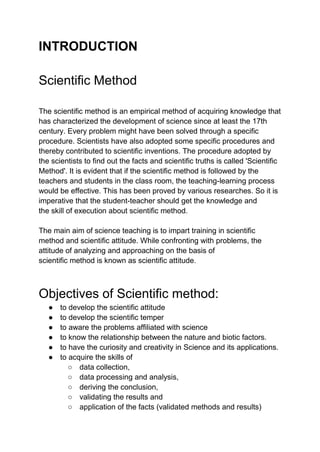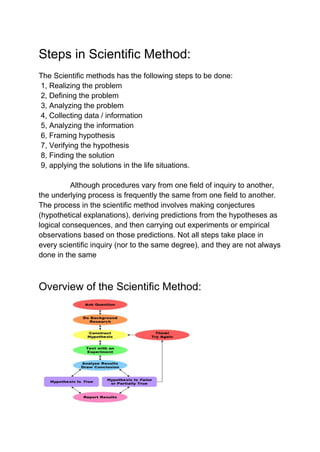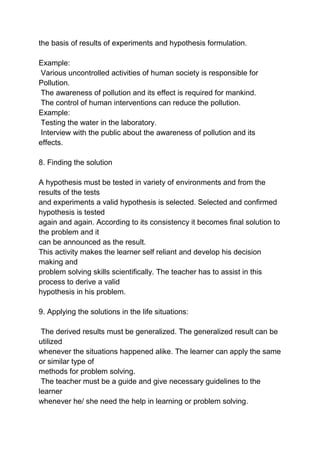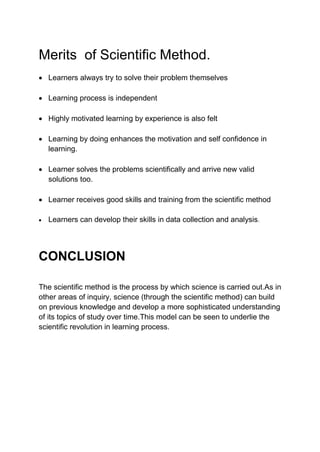This document provides an overview of the scientific method. It discusses the objectives and steps of the scientific method, including realizing a problem, defining it, analyzing it, collecting data, analyzing the information, framing a hypothesis, verifying the hypothesis, finding a solution, and applying solutions. The scientific method is presented as a way to develop scientific attitude and skills like data collection, analysis, and problem solving. Following the scientific method can make teaching and learning more effective.







